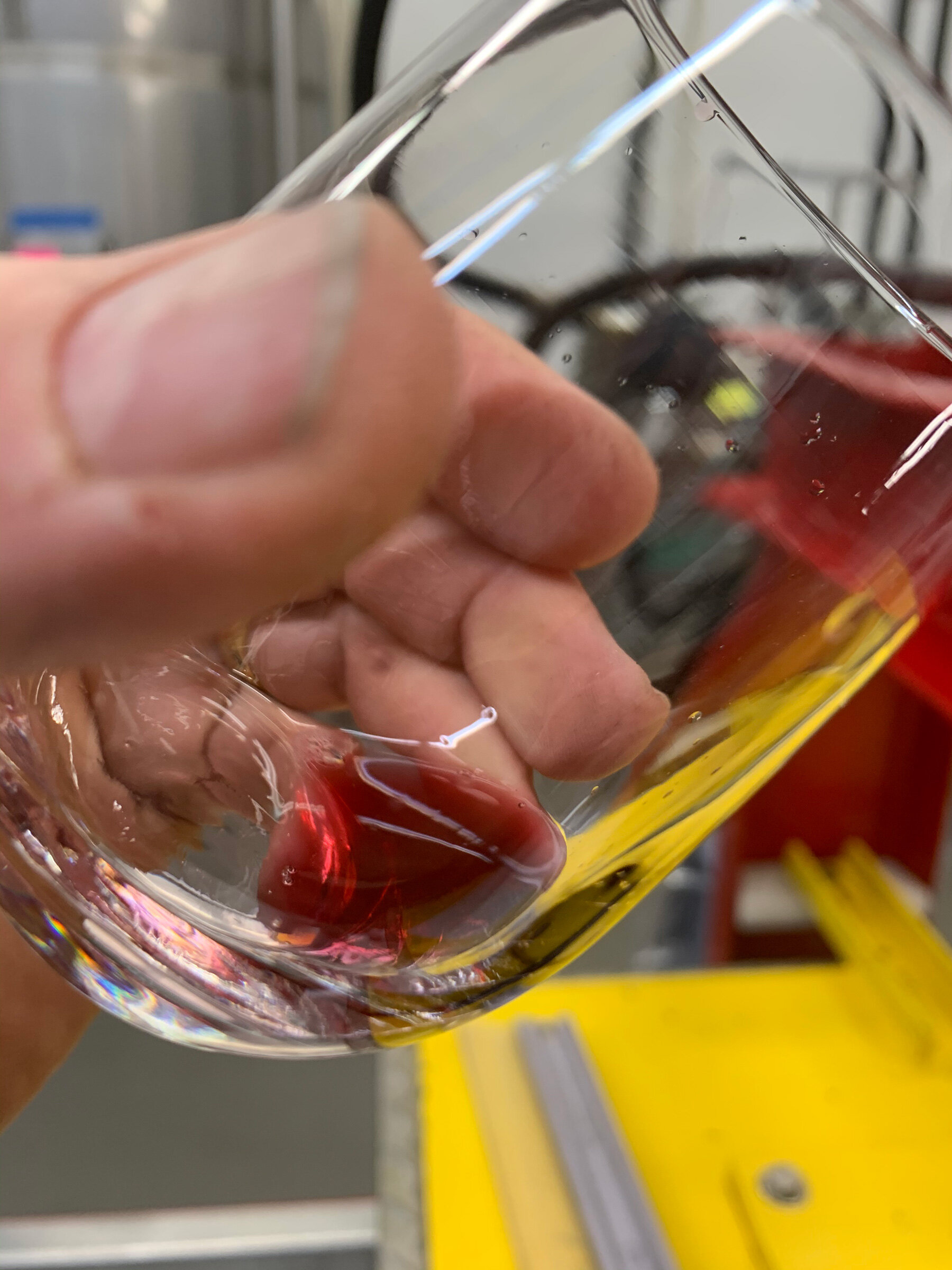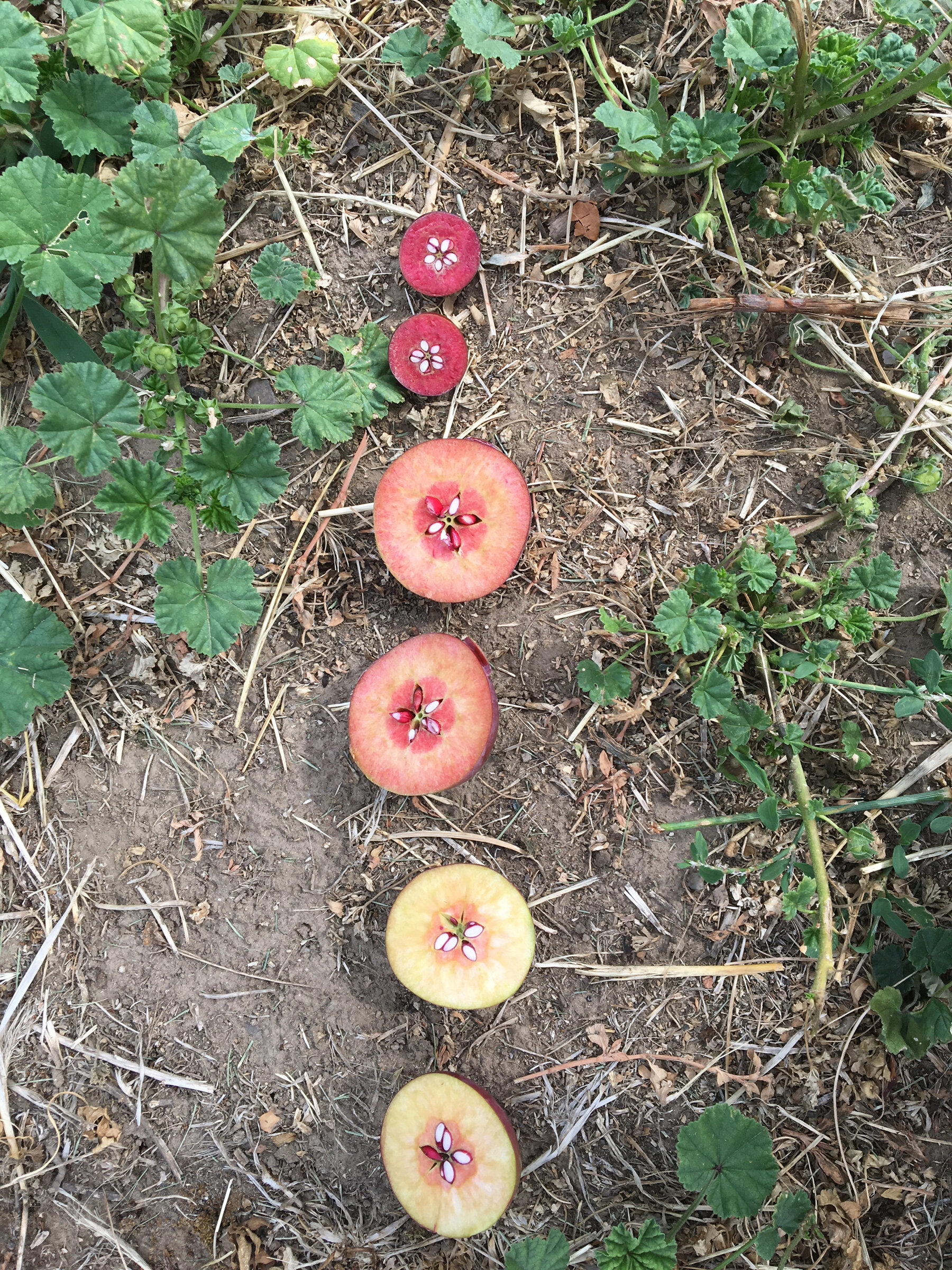Ever-Amazing Apples
When Liberty first opened in 2013, few in America knew about cider, much less what it “ought to be.” In part because of this, two general approaches evolved in the US:
Seen here in mid-July, Bill’s red crabapples nearly tripled in size before harvest - finishing about the size of plums.
A beer-like approach, where apples are treated like a blank canvas and added flavors are the main focus. Just as (most) brewers have marginal concern about the specifics of grain, this approach allows cideries to use commodity-grade eating apples, perhaps specifying things like sugar and acidity levels, but little else.
A wine-like approach, where the flavors and characteristics of apples are treated as the primary, if not exclusive, focus.
If you’re reading this, you know we’re in the second camp. A tougher road for a business perhaps, but apples are our passion. It’s what we do.
Happily, apples are incredibly varied. Some, like Gravenstein, make for light-bodied, quaffable ciders, while others – Manchurian Crabapples, for instance – provide very intense flavors. Far from simply tasting “apple-y”, varietals may express a wide range of flavors, including tropical, stone fruit, berry, citrus or herbal notes.
But if there’s one type of apple we’re anxious to try, it’s the red-fleshed apple. These are relatively new on the scene, and even now are being bred across the globe as “the next big thing.” Most aren’t especially suitable for making cider. But some are – and some breeders, like our partner grower Bill Howell of Topcliffe Farms – are actually breeding red-fleshed varietals with cider in mind.
This fall, Bill was kind enough to share his entire crop of red-fleshed crabapples with us in exchange for helping assess their potential. But when we say “entire crop”, we’re not talking bins, bushels or even boxes. No, Bill’s first crop from his test trees added up to maybe one pound, providing around two cups of juice!
Despite being the smallest batch we’ve ever attempted, Bill’s plum-sized, deep-red apples have been impressive. Sugar levels in the juice were around 24.5 Brix, or enough to produce as much as 13.5% alcohol. Our meter measured 3.38 pH – about as tart as an average Granny Smith apple, but workable. We don’t have capacity to test tannins, but to taste, there’s plenty there. And perhaps most remarkable, the juice was deep, ruby-red – and unlike many red-fleshed apple ciders, remained so even after fermentation was complete.
The pictures below show the apples prior to pressing, and (in tiny amounts) as immature cider. At this stage, flavors seem muted but are reminiscent of wine, almost merlot-like. We’re now letting our nano-batch rest for a while (time is always an ingredient!) to see what develops.
We’re cautiously hopeful that two or three years from now, we’ll have cider for sale made with Bill’s red apples. And that once again, we’ll be able to showcase just how versatile, flavorful and amazing apples can be.
Thanks for supporting Liberty, and stay tuned.



